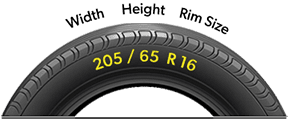How to Teach a Teen to Drive Safely
When it comes to car insurance, teenagers and young people pay the highest. Why? According to insurance companies, people within this age bracket are risky drivers. In other words, they are more likely to drive aggressively and file claims when compared with elderly people.
As mostly is it the parents who pay for the car insurance during the early years, they must teach their children how to become better drivers. With fewer accidents, they can get much lower rates in the future, along with discounts such as No Claims Discount. Please make sure that your child has a valid learner’s driving license before handing them the vehicle keys.
Also, you must inform your insurance company that your child might be driving your car. If your child is not listed as one of the drivers, it can cause problems if your car ends up in a crash. Now, let us get back to our topic. Here’s how you can teach teenagers to become better drivers.
Start with the Basics
Tell your child about the ins and outs of the car. They must know everything there is to know about vital components like the tires, car battery, and everything underneath the hood. For example, parents must teach their children about maintaining the correct tire pressure or how to change a flat tire.
Other than this, educate them on the importance of wearing a seat belt and driving within the speed limits. Make sure that you teach them through your behaviour. If you don't wear a seatbelt yourself while driving, your kid will replicate your behaviour. Lastly, tell them to adjust the side and rear-view mirrors according to the requirements.
Once you are done teaching the basics, move to the next step.
Practice
After teaching them about the basics, take them to an empty area for driving practice. Never give a new driver a car in a busy place. They might get confused and end up causing an accident. Thus, it is better to practice in an empty area such as a parking lot. During practice, teach them how to accelerate and brake properly.
Kindly do not yell at your child while they are practising, as it will dent their confidence. They might make a few mistakes early on before gradually improving. Don’t just focus on acceleration and braking alone. Teach them about parking. Crashing into other cars while parking is one of the primary reasons for insurance claims.
If you feel that your kid is doing a good job, take them to a low traffic area. Driving in a low traffic area will help them develop road sense. It is better to allow your child to drive in low-traffic areas for at least a month or two. It will help them understand when to apply the brakes, understand the traffic flow, use indicators and road signs.
Drive Under All Conditions
Don't let your kid drive only during the daytime or when it is sunny. Instead, take them out for a drive when it is night time, raining heavily, or snowing. By allowing them to practice in all types of driving conditions, you will significantly improve their driving skills. After all, they won’t be driving during the daytime throughout their lives.
Assess their Driving Habit
Young people have a habit of using their mobile phones while driving or playing around with the infotainment system. If your kid does the same, tell them about the dangers of such distractions. There’s no need to adopt a harsh tone. Instead, teach through compassion and example.
Modern vehicles come with rearview cameras, parking sensors and a lot more. Keep an eye on your kid to see if they rely on these gadgets too much. If they are, discourage them. During the early stages, children must know how to drive and park without the use of gadgets. The reason is not every car has them. What if they get a car without these gadgets? How will they drive around then?
Maintenance
The last thing that you must teach your child is periodic car maintenance. Ask them to check the tire air pressure regularly and other things like that. Take them to get an oil change and ask them to do it the next time. Other than this, they need to know about the different fluids in the car and when they require changing.



















Wrap Up
This concludes our article. If you have any questions in mind, let us know. By following these tips, you can ensure your child’s safety and help them become a responsible driver. It will help them get better insurance rates in the future. Thank You.